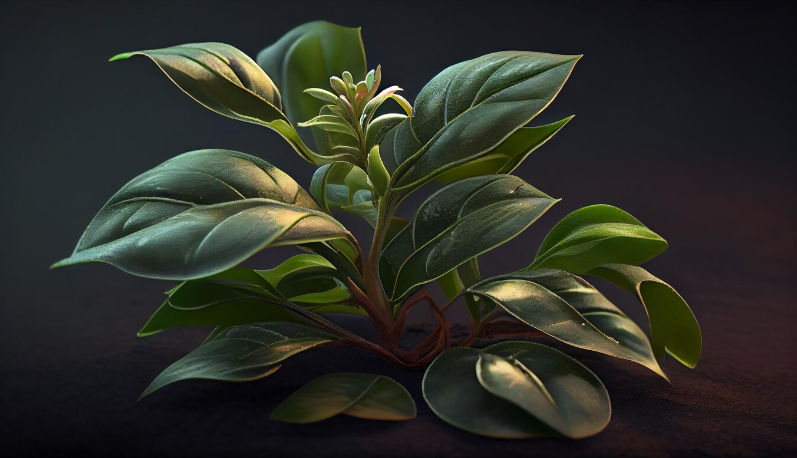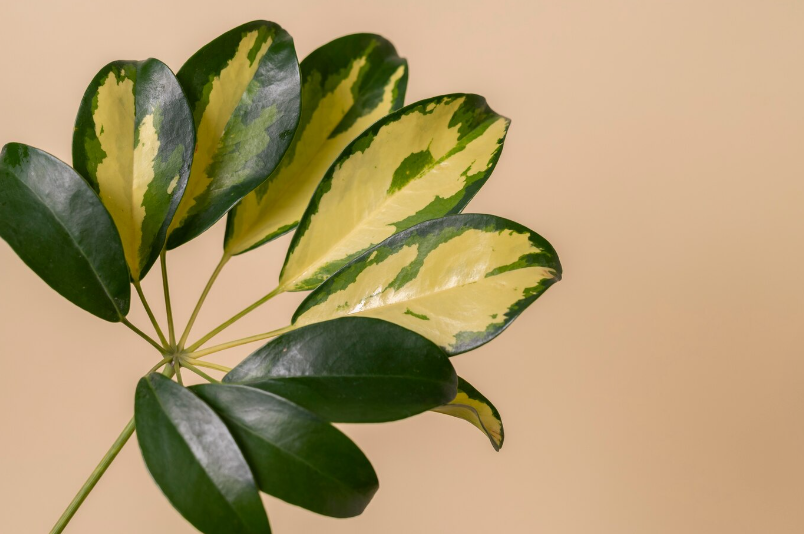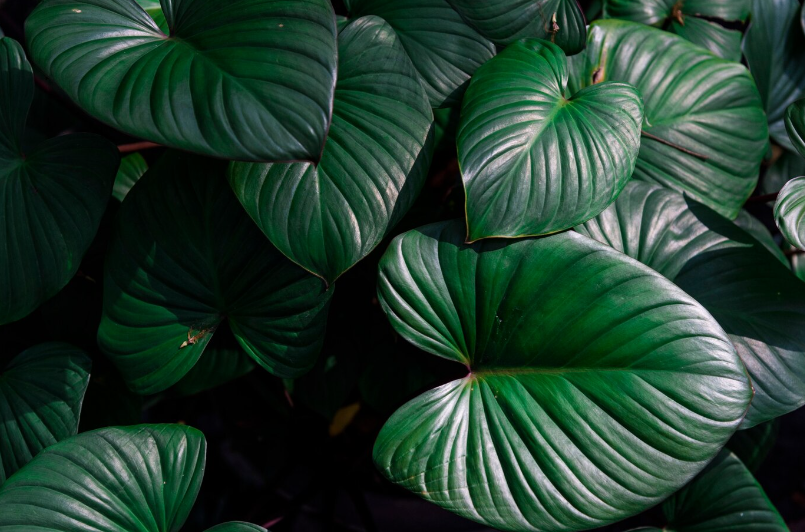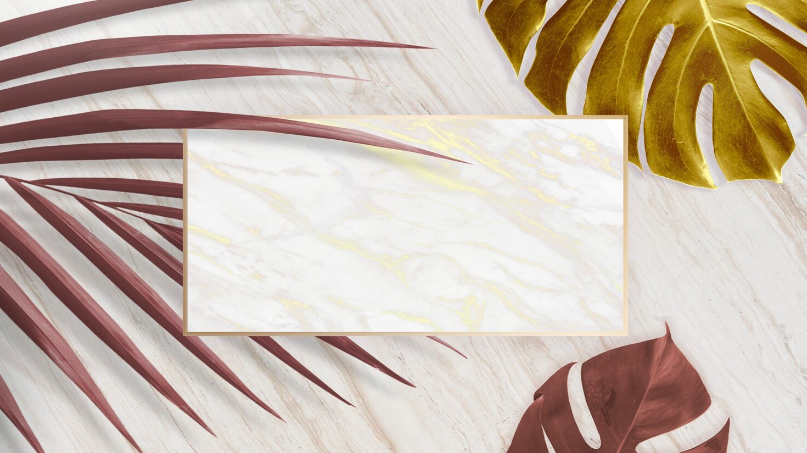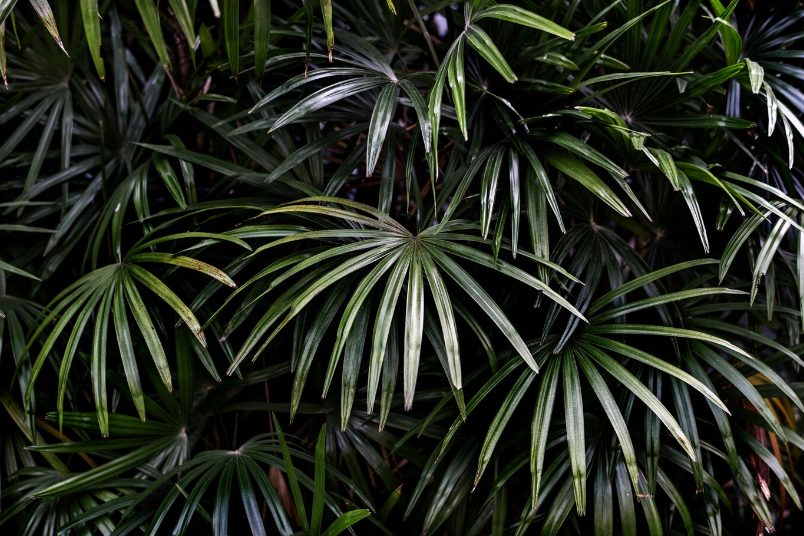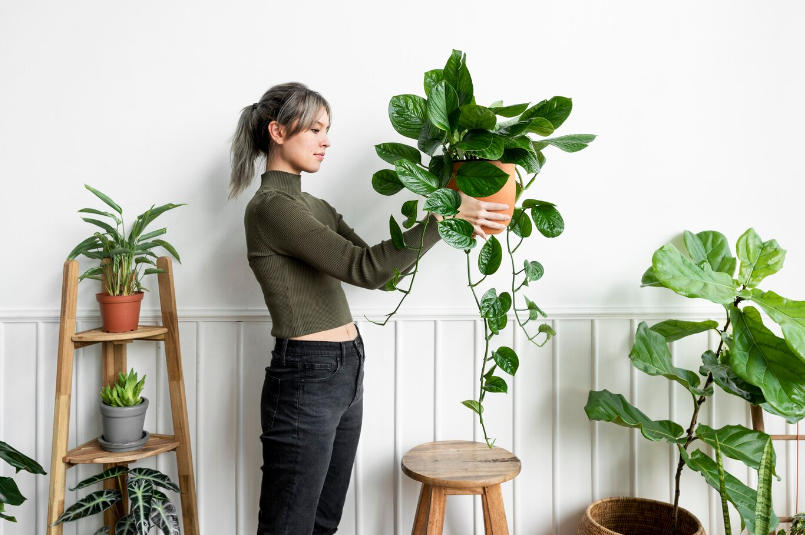Complete Guide to Caring for and Growing Brasil Philodendron – Tips, Tricks, and Essential Information
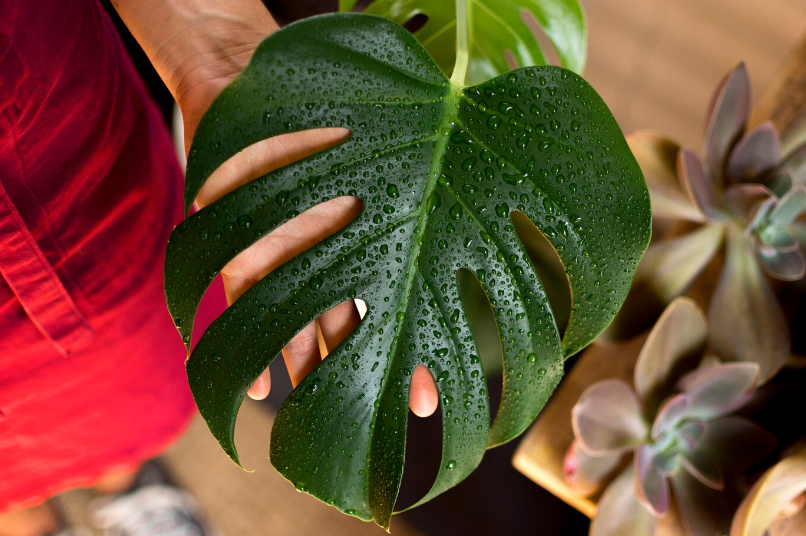
Welcome to our complete Brasil Philodendron care and growing guide! These striking houseplants are a popular choice for indoor gardens, thanks to their beautiful, heart-shaped leaves with vibrant green and yellow variegation. Whether you’re a seasoned plant parent or just starting your plant journey, this guide will provide you with all the information you need to successfully care for and grow your Brasil Philodendron.
Care
Caring for your Brasil Philodendron is relatively easy, making it an excellent choice for both beginners and experienced gardeners. This tropical plant thrives in bright, indirect sunlight, so place it near a window or in a location with filtered light. Avoid direct sunlight, as it can scorch the leaves.
Watering is an essential aspect of Philodendron care. Allow the top inch of soil to dry out before watering, then thoroughly soak the soil until water drains from the bottom. It’s important not to overwater, as this can lead to root rot. In winter, reduce watering frequency to prevent waterlogged soil.
Fertilizer
Brasil Philodendrons appreciate regular feeding during the growing season. Use a balanced liquid fertilizer diluted to half strength every four to six weeks. This will help promote healthy growth and vibrant foliage. However, avoid fertilizing in winter, as the plant’s growth slows down during this time.
Propagation
Philodendrons are relatively easy to propagate, making it an exciting way to expand your plant collection. The most common method is stem cuttings. To propagate your Brasil Philodendron, take a 4-6 inch cutting just below a leaf node using a clean, sharp knife or garden shears. Remove the lower leaves, leaving at least two leaves on the stem. Place the cutting in a glass of water or a well-draining soil mix until roots develop.
With the proper care and attention, your Brasil Philodendron can thrive and bring a touch of tropical beauty to your indoor space. Enjoy watching your plant grow and flourish as you provide it with the love and care it deserves!
Growing and Caring for Brasil Philodendron: A Complete Guide
Brasil Philodendron, also known as Philodendron hederaceum ‘Brasil’, is a popular houseplant that is loved for its beautiful variegated leaves. It is a low-maintenance plant that can thrive in different environments, making it a great choice for both beginner and experienced plant enthusiasts.
Light Requirements
Brasil Philodendron thrives in bright, indirect light. It can tolerate lower light conditions, but its growth may slow down. To encourage optimal growth and vibrant foliage, place your plant in a location that receives bright, filtered light. Avoid exposing it to direct sunlight, as it can cause leaf burn.
Watering
When it comes to watering, Brasil Philodendron prefers to be kept evenly moist but not waterlogged. Allow the top inch of soil to dry out before watering again. Overwatering can lead to root rot, so it’s important to ensure proper drainage by using a well-draining potting mix and a drainage hole in your container.
During the winter months, when the plant goes into a dormant phase, you can reduce the frequency of watering. Be careful not to let the soil completely dry out, as this can also harm the plant.
Temperature and Humidity
Brasil Philodendron prefers average room temperatures between 65-85°F (18-29°C). It can tolerate slightly cooler temperatures, but avoid exposing it to temperatures below 55°F (13°C).
This plant also enjoys higher humidity levels, so misting the leaves or using a humidifier can help create a more favorable environment. If the air in your home is dry, you can also place the plant on a tray filled with water and pebbles to increase humidity around it.
Fertilizing
To maintain healthy growth, you can fertilize your Brasil Philodendron every 2-4 weeks during the growing season (spring and summer). Use a balanced, water-soluble fertilizer and dilute it to half the recommended strength. Avoid fertilizing during the winter months when the plant is dormant.
Pruning
Pruning is not necessary for the health of Brasil Philodendron, but it can help maintain a neat and compact shape. If your plant starts to look leggy or overgrown, you can trim back the vines as desired. Use clean, sharp pruning shears to make clean cuts just above a leaf node.
Propagating your Brasil Philodendron through stem cuttings is also an option if you want to grow more plants or share them with friends and family.
With proper care and attention, your Brasil Philodendron will reward you with lush, vibrant foliage, making it a stunning addition to your indoor plant collection.
Brasil Philodendron Plant
The Brasil Philodendron is a popular variety of the philodendron plant known for its vibrant green and yellow leaves. It is a tropical plant native to the rainforests of South America and is commonly grown as a houseplant in many parts of the world.
As part of the philodendron family, the Brasil Philodendron is relatively easy to care for and can thrive in various conditions. It is a versatile plant that can be grown in soil or water and can tolerate a wide range of light levels, although it prefers bright, indirect light.
Growing the Brasil Philodendron
To grow a Brasil Philodendron, start by choosing a well-draining potting mix or a suitable hydroponic system. If planting in soil, make sure the pot has drainage holes to prevent waterlogging. If growing in water, use a clear container to allow light penetration to the roots.
The Brasil Philodendron enjoys moderate humidity, so misting the leaves or placing a tray of water nearby can help create a suitable environment. It is important to water the plant regularly, keeping the soil or water consistently moist but not soggy. Avoid overwatering, as this can lead to root rot.
As the Brasil Philodendron grows, it may need support for its vines. You can use stakes, trellises, or moss poles to provide stability and encourage upward growth. Pruning may also be necessary to maintain the plant’s shape and remove any dead or yellowing leaves.
The Brasil Philodendron is a relatively fast-growing plant, especially in ideal conditions. Regular fertilization with a balanced houseplant fertilizer can help promote healthy growth and vibrant foliage. Be sure to follow the instructions on the fertilizer packaging for the correct dosage.
Tips for Success
Here are some additional tips to ensure the success of your Brasil Philodendron:
- Place the plant in a location with bright, indirect light.
- Keep the temperature between 60-85°F (15-29°C).
- Avoid exposing the plant to direct sunlight, as it can scorch the leaves.
- Rotate the plant periodically to ensure even growth.
- Keep an eye out for signs of pests, such as spider mites or mealybugs, and take appropriate actions if needed.
- Regularly dust the leaves to maintain their shine and keep them free from debris.
By following this guide and providing the necessary care, you can enjoy a beautiful and thriving Brasil Philodendron in your home or garden.
Choosing the Right Location for Your Plant
When it comes to growing and caring for Brasil Philodendron, choosing the right location is crucial. This guide will help you understand the ideal conditions needed for your plant to thrive.
Light
Brasil Philodendrons prefer bright but indirect light. Place your plant in a spot where it can receive filtered sunlight. Direct sunlight can burn the leaves and cause damage. On the other hand, low light can result in slower growth and poor foliage development.
Temperature
Brasil Philodendrons thrive in temperatures between 65°F (18°C) and 85°F (29°C). Avoid placing your plant in an area with extreme temperature fluctuations or near cold drafts. Maintaining a consistent temperature will promote healthy growth.
Humidity
This plant appreciates higher humidity levels. If you live in a drier climate, consider using a humidifier or placing a tray of water near the plant to increase humidity. Misting the leaves can also help maintain the desired humidity level.
Note: It’s important to avoid placing your Brasil Philodendron near heating or cooling vents, as the airflow can lead to dryness and stress the plant.
By carefully selecting the right location for your Brasil Philodendron, you’ll ensure that it receives the optimal amount of light, temperature, and humidity. This will result in a healthy and vibrant plant that will thrive in your care.
Providing the Ideal Light Conditions
When it comes to growing a Brasil Philodendron, providing the ideal light conditions is crucial for its overall health and growth. This tropical plant thrives in bright, indirect light, making it perfect for indoor spaces, especially those with limited access to natural sunlight.
For optimal growth, place your Brasil Philodendron near a north or east-facing window where it can receive bright, indirect light. Avoid placing it in direct sunlight, as this can lead to leaf burn and damage. If you notice that the leaves are turning yellow or brown, it may be a sign that the plant is receiving too much light and needs to be moved to a slightly shadier spot.
On the other hand, if you notice the plant becoming leggy or reaching towards the light source, it may indicate that it is not receiving enough light. In this case, consider moving it closer to a window or providing supplemental lighting using fluorescent grow lights.
It’s important to note that while the Brasil Philodendron can tolerate lower light conditions, it may result in slower growth and less vibrant foliage. Therefore, ensuring it receives adequate light is key to keeping it healthy and thriving.
Key points to remember:
- Place your Brasil Philodendron in a well-lit area with bright, indirect light.
- Avoid direct sunlight to prevent leaf burn and damage.
- Monitor the plant for signs of too much or too little light and adjust its placement accordingly.
- Consider providing supplemental lighting if natural light is limited.
By providing the ideal light conditions, you can ensure that your Brasil Philodendron grows beautifully and remains a stunning addition to your indoor plant collection.
Watering and Hydration Needs
Proper watering is essential for the care and growth of Brasil Philodendron. Understanding the watering needs of this plant will help ensure it thrives in your indoor or outdoor space.
Frequency of Watering
Brasil Philodendron prefers moderately moist soil. It is important to avoid overwatering, as this can lead to root rot and other issues. Allow the top inch or two of soil to dry out between waterings. This typically means watering once every 7-10 days, but the frequency may vary depending on factors such as temperature and humidity.
Watering Technique
When watering your Brasil Philodendron, it is best to use room temperature, filtered water. This helps prevent the buildup of salts and chemicals that may be present in tap water. Slowly pour water onto the soil until it begins to come out of the drainage holes in the pot, ensuring thorough watering.
Avoid getting water directly on the leaves, as this can lead to fungal diseases and other issues. If needed, gently wipe the leaves with a damp cloth to remove dust and maintain their overall health and beauty.
Hydration Needs
Brasil Philodendron appreciates higher humidity levels. A humidity level of 40-60% is ideal for this plant. If your environment is dry, especially during winter months when indoor heating is on, you can increase humidity by using a humidifier or placing a tray filled with water near the plant. Misting the leaves occasionally can also provide some relief.
Proper watering and maintaining the right level of hydration will contribute to the overall health and vitality of your Brasil Philodendron, helping it to grow and thrive in its desired location.
Soil Requirements for Brasil Philodendron
Proper soil composition is essential for the health and growth of your Brasil Philodendron. The right soil will provide necessary nutrients and support root development. Here are the key soil requirements for your philodendron:
- Well-draining: Brasil Philodendron prefers soil that drains well to prevent waterlogging and root rot. Ensure that your soil mixture is loose and porous to allow excess water to escape.
- Moist but not soggy: While it’s important to avoid waterlogging, Brasil Philodendron also needs consistently moist soil to thrive. Keep the soil slightly damp but not overly wet.
- Rich in organic matter: Organic matter provides essential nutrients and improves soil structure. Mix in compost or well-rotted manure to enrich the soil and support plant growth.
- pH level: Brasil Philodendron prefers slightly acidic to neutral soil with a pH ranging from 5.5 to 7.0. Test the pH level of your soil and make necessary adjustments if needed.
- Air circulation: Proper air circulation is vital to prevent moisture buildup and fungal growth. Choose a soil mixture that allows for good airflow around the roots of your philodendron.
By following these soil requirements, you can provide optimal growing conditions for your Brasil Philodendron. Remember to regularly check the soil moisture and adjust watering accordingly to ensure the plant’s health and vitality.
Fertilizer and Nutrient Requirements
Proper fertilization is an essential part of caring for your Brasil philodendron and ensuring its optimal growth and health. These plants have specific nutrient requirements that need to be met in order for them to thrive.
When it comes to fertilizing your Brasil philodendron, it’s important to use a balanced, water-soluble fertilizer. Look for a fertilizer that has a balanced ratio of nitrogen, phosphorus, and potassium (NPK).
During the growing season, which is typically spring and summer, you should fertilize your Brasil philodendron every 2 to 4 weeks. In the winter months, when the plant is dormant, you can reduce the frequency of fertilization to once every 6 to 8 weeks.
When applying the fertilizer, make sure to dilute it according to the instructions on the packaging. Over-fertilizing can lead to nutrient burn and can be very damaging to the plant. It’s better to apply less fertilizer than to overdo it.
In addition to regular fertilization, it’s also important to provide your Brasil philodendron with the right nutrients. These plants require a well-draining soil mix that is rich in organic matter. You can add compost or peat moss to the soil to improve its nutrient content.
Another way to provide additional nutrients to your Brasil philodendron is through foliar feeding. This involves spraying a liquid fertilizer directly onto the leaves of the plant. This method allows the plant to absorb nutrients quickly and efficiently.
Remember to always water your Brasil philodendron before applying fertilizer. This will help prevent any potential damage to the plant’s roots.
By ensuring that your Brasil philodendron receives the proper fertilization and nutrient requirements, you can promote healthy growth and beautiful foliage in your plant.
Repotting Your Philodendron
Proper repotting is an essential part of caring for your Brasil Philodendron. As your philodendron grows, its roots will need more space to spread out and continue to thrive.
Here are some steps to follow when repotting your philodendron:
- Choose a pot that is one size larger than the current pot. This will allow for the growth of the roots.
- Make sure the new pot has drainage holes at the bottom to prevent water from pooling and causing root rot.
- Prepare a well-draining potting mix that is rich in organic matter. You can also add perlite or sand to improve drainage.
- Carefully remove the philodendron from its current pot, being gentle with the roots to avoid damaging them.
- Inspect the roots for any signs of rot or disease. If you notice any, trim them off with clean, sharp scissors.
- Place a layer of the prepared potting mix at the bottom of the new pot.
- Position the philodendron in the center of the new pot, making sure it is at the same depth as it was in the previous pot.
- Fill in the spaces around the philodendron with the remaining potting mix, gently tamping it down to ensure good contact with the roots.
- Water the philodendron thoroughly after repotting, allowing the excess water to drain out of the pot.
- Place the repotted philodendron in a location with bright, indirect sunlight to aid in its recovery.
Repotting your Brasil Philodendron every 1-2 years is generally sufficient to promote healthy growth. However, if you notice the roots becoming extremely cramped or the plant becoming root-bound, it may need to be repotted more frequently.
By following these repotting guidelines, you can ensure that your Brasil Philodendron continues to thrive and bring beauty to your home.
Pruning and Trimming for Healthy Growth
In order to ensure the healthy growth of your Brasil philodendron, it’s important to implement regular pruning and trimming practices. Pruning helps to promote new growth, shape the plant, and remove any dead or damaged foliage.
When pruning your Brasil philodendron, make sure to use clean, sharp pruning shears to avoid any damage to the plant. Start by removing any yellow or brown leaves, as well as any stems that appear weak or wilted. This will encourage the plant to focus its energy on new growth.
Additionally, you may choose to trim back any long or leggy stems to promote a more compact and bushy appearance. This can be done by cutting the stem back to just above a leaf node, where new growth will emerge.
It’s also important to regularly remove any debris or dead leaves from around the base of the plant. This will help to prevent the buildup of pests or diseases, and will keep the overall appearance of the plant tidy and neat.
Overall, by incorporating regular pruning and trimming into your Brasil philodendron care routine, you can help to ensure the healthy growth and longevity of your plant.
Dealing with Common Pests and Diseases
When growing and caring for Brasil Philodendrons, it is important to be aware of common pests and diseases that can affect these plants. By knowing what to look out for and how to address these issues, you can ensure the health and vitality of your Brasil Philodendron.
Pests
Brasil Philodendrons can be susceptible to a few common pests, including:
| Pest | Description | Treatment |
|---|---|---|
| Spider mites | These tiny pests can be identified by the fine webbing they produce and the yellow speckling on plant leaves. | Wipe down the leaves with a mixture of water and mild dish soap, or use a commercial pesticide specifically designed to target spider mites. |
| Mealybugs | Mealybugs are small, soft-bodied insects that can be found on the undersides of leaves and in leaf axils. | Remove mealybugs by hand and/or use a cotton swab dipped in rubbing alcohol to wipe them away. Repeat treatment as necessary. |
Diseases
While Brasil Philodendrons are generally resistant to diseases, it is still important to keep an eye out for the following:
| Disease | Symptoms | Treatment |
|---|---|---|
| Root rot | Yellowing leaves, wilting, and a foul odor are signs of root rot, which is often caused by overwatering. | Inspect the roots and remove any rotting portions. Improve drainage and adjust watering to avoid over-saturation of the soil. |
| Leaf spot | Circular or irregular dark spots on leaves can indicate leaf spot disease. | Remove affected leaves and avoid overhead watering. Ensure good air circulation and consider applying a fungicide if necessary. |
Regularly inspecting your Brasil Philodendron for signs of pests and diseases is crucial for maintaining a healthy plant. By addressing any issues promptly and correctly, you can ensure your plant thrives and continues to bring beauty to your space.
Propagating Your Brasil Philodendron
Propagating your Brasil Philodendron is a rewarding way to not only expand your plant collection, but also share the joy of caring for these beautiful plants with others. There are a few different methods you can use to propagate your Brasil Philodendron, so let’s take a look at each one.
1. Stem Cuttings
Stem cuttings are one of the most common and easiest ways to propagate your Brasil Philodendron. To do this, simply take a sharp, clean pair of pruning shears and cut a section of stem with at least two nodes. Remove any leaves from the bottom portion of the cutting, and dip the cut end in rooting hormone if desired. Then, place the cutting in a well-draining soil mix and keep it moist until roots develop.
2. Air Layering
Air layering is another method you can use to propagate your Brasil Philodendron. This technique involves creating a wound on a healthy section of stem, applying rooting hormone to the wound, and then wrapping the stem with moist sphagnum moss and plastic wrap. Over time, roots will develop within the moss, and you can then cut the rooted section and plant it in its own pot.
3. Division
If your Brasil Philodendron has multiple clumps of stems, you can divide the plant to create new plants. Carefully remove the entire plant from its pot, and gently separate the clumps of stems. Be careful to keep roots intact. Once divided, each clump can be potted up in its own container using a well-draining soil mix.
4. Water Propagation
Water propagation is a simple and fun method for propagating your Brasil Philodendron. Cut a stem with several nodes and place it in a container filled with water. Make sure that the nodes are submerged in the water. Keep the container in a warm and bright location, and change the water every week or so to prevent mold or bacterial growth. Once roots develop, you can transfer the cutting to a pot with soil.
Regardless of the method you choose, it’s important to provide your new plants with the same care as their parent plant. This includes providing bright, indirect light, regular watering, and occasional fertilization. With a little bit of patience and care, you’ll soon have a collection of beautiful Brasil Philodendron plants to enjoy!
Training and Supporting the Climbing Vines
To ensure the healthy growth and development of your Brasil Philodendron, it is important to properly train and support its climbing vines. These plants have aerial roots that allow them to attach to surfaces and climb upward. Here are some tips to help you care for and guide your climbing vines:
1. Provide a supportive structure: As your Brasil Philodendron grows, it will need a sturdy support structure to climb. You can use a trellis, moss pole, or even a decorative ladder to provide stability for the vines. Make sure the structure is tall enough to accommodate the plant’s growth.
2. Attach the vines: As the aerial roots develop, gently guide them towards the support structure. You can use soft ties or plant ties to secure the vines to the support without causing any damage. Avoid using materials that can constrict the growth of the plant.
3. Monitor the growth: Regularly check the progress of the climbing vines. If any roots or tendrils are not attached to the support, gently guide them in the right direction. Be careful not to break or damage the delicate aerial roots.
4. Prune and trim: As the vines grow, you may need to prune and trim them to maintain the desired shape and size. Remove any dead or damaged leaves and branches to encourage new growth. Avoid pruning too much, as it can put stress on the plant.
5. Provide adequate light: In addition to proper support, your Brasil Philodendron also needs adequate light to thrive. Place it in a location with bright, indirect light to promote healthy growth. Avoid direct sunlight, as it can burn the leaves.
By following these tips and providing the necessary care, your Brasil Philodendron’s climbing vines will grow strong and healthy. It will not only enhance the beauty of your space but also create a lush and vibrant environment.
Displaying Your Philodendron: Pots and Containers
When it comes to displaying your philodendron, choosing the right pot or container is just as important as proper growing and care. The pot you choose will not only affect the aesthetics of your plant, but also its overall health and growth.
Here are a few things to consider when selecting a pot or container for your philodendron:
| Size: | Choose a pot that is just slightly larger than the current root ball of your philodendron. If the pot is too large, it can lead to overwatering and root rot. On the other hand, if the pot is too small, the roots may become cramped and hinder the growth of your plant. |
| Material: | There are various materials to choose from, including clay, plastic, and ceramic. Clay pots are porous and allow for better airflow, but they also dry out more quickly. Plastic pots retain moisture better but may not provide as much airflow. Ceramic pots are durable and come in a wide range of styles, but they can be heavy and may require additional drainage holes. |
| Drainage: | Proper drainage is essential for preventing waterlogged soil and root rot. Look for pots or containers with drainage holes at the bottom to allow excess water to escape. If your favorite pot doesn’t have drainage holes, consider adding a layer of rocks or perlite at the bottom to facilitate drainage. |
| Style: | Consider the style and aesthetic you want to achieve when selecting a pot or container. There are countless options available, ranging from sleek and contemporary to rustic and vintage. Choose a style that complements your philodendron and your overall interior or exterior design. |
Remember, the right pot or container can enhance the beauty of your philodendron while also providing it with the optimal growing conditions. Take your time to choose the perfect pot, and your philodendron will thrive and bring joy to your space for years to come.
Non-toxicity and Pet Safety
When it comes to caring for and growing philodendron plants, it’s important to consider the safety of your pets. One of the great advantages of the Brasil Philodendron is its non-toxicity, making it a safe choice for households with cats or dogs who may have a tendency to chew on plants.
Unlike many other popular houseplants, the Brasil Philodendron does not contain any toxic compounds that could harm your furry friends if ingested. This peace of mind allows you to enjoy the beauty of this stunning plant without worrying about your pets’ well-being.
Precautions for Pet Safety
While the Brasil Philodendron is non-toxic, it’s still essential to take some precautions to ensure your pets won’t accidentally damage the plant or themselves:
- Keep the plant out of reach: Place the philodendron in a location where your pets cannot access it. Consider hanging it from a ceiling hook or placing it in a room that your pets do not have access to.
- Train your pets: If your pets have a habit of chewing on plants, it’s important to train them to stay away from the philodendron. Use positive reinforcement techniques and provide them with alternative chew toys or treats to redirect their behavior.
By following these simple guidelines, you can ensure that both your Brasil Philodendron and your pets can thrive and coexist in a safe and harmonious environment.
Troubleshooting Common Issues with Brasil Philodendron
While growing Brasil Philodendron can be a rewarding experience, it’s not uncommon to encounter some issues along the way. Here are some common problems you may come across and how to troubleshoot them.
| Issue | Possible Cause | Solution |
|---|---|---|
| Yellowing leaves | Overwatering or underwatering | Check the moisture level of the soil. Adjust watering accordingly and ensure proper drainage. |
| Brown spots on leaves | Too much direct sunlight | Move the plant to a spot with indirect or filtered sunlight. |
| Drooping leaves | Underwatering or root rot | Check the moisture level of the soil. If underwatered, increase watering frequency. If root rot is suspected, trim affected roots and repot in fresh soil. |
| Pests | Mealybugs, spider mites, or scale insects | Inspect the plant for signs of pests. Use an appropriate insecticide or natural remedy to get rid of them. |
| Slow growth | Insufficient light or nutrients | Place the plant in a brighter location or provide artificial lighting. Consider fertilizing the plant with a balanced houseplant fertilizer. |
By identifying and addressing these common issues, you can ensure your Brasil Philodendron stays healthy and thrives in your care.
Q&A:
How often should I water my Brasil Philodendron?
It is best to water your Brasil Philodendron when the top inch of soil feels dry. Overwatering can lead to root rot, so make sure to allow the soil to dry out between waterings.
Can I keep my Brasil Philodendron in direct sunlight?
While Philodendrons can tolerate some direct sunlight, it is best to place your Brasil Philodendron in bright, indirect light. Too much direct sunlight can scorch the leaves.
What is the best temperature range for Brasil Philodendron?
Brasil Philodendron prefers temperatures between 65-85°F (18-29°C). It is important to keep it away from drafts or sudden temperature changes.
How often should I fertilize my Brasil Philodendron?
You can fertilize your Brasil Philodendron once a month during the spring and summer using a balanced houseplant fertilizer. During the winter months, when the plant is not actively growing, you can reduce the frequency to every other month.
Can I propagate my Brasil Philodendron?
Yes, you can propagate your Brasil Philodendron through stem cuttings. Simply cut a 4-6 inch section of the stem below a node, remove the lower leaves, and place the cutting in water or soil until roots develop.
How often should I water my Brasil Philodendron?
Water your Brasil Philodendron once a week or when the top inch of soil feels dry. It is important not to overwater the plant as it can lead to root rot.
What is the best location for my Brasil Philodendron?
The best location for your Brasil Philodendron is a spot with bright, indirect sunlight. It can tolerate some shade, but too much direct sunlight can scorch its leaves. Avoid placing it in areas with drafts or extreme temperature fluctuations.
